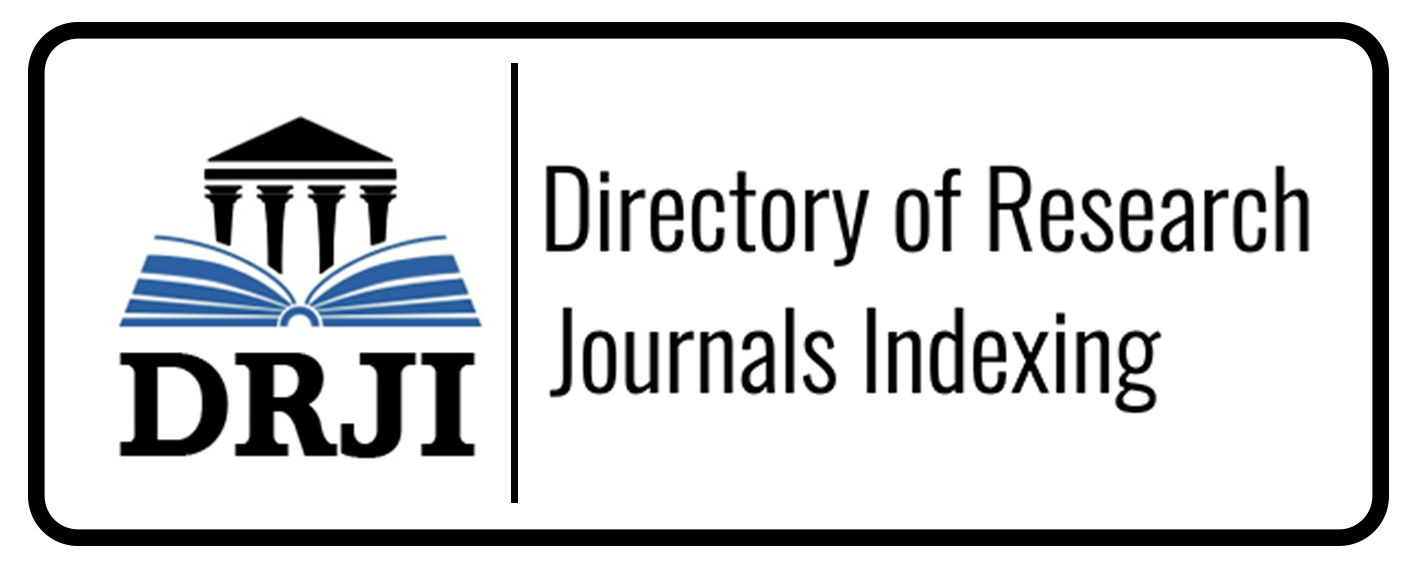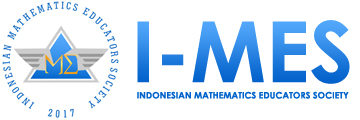Elevating Learning Independence: Contextual Teaching and Learning Through Media Development Video Tutorials
Abstract
This study aims to determine the validity of video tutorials based on Contextual Teaching and Learning for independent learning. To know the practicality of video tutorials based on Contextual Teaching and Learning for independent learning. To find out the effectiveness of video tutorials based on Contextual Teaching and Learning for independent learning seen from the responses of students. The type of research used in this research is research and development (Research and Development). The development model used in this research is the development model according to Isman in 2011 which consists of five stages, namely input, process, output, feedback and learning. The subjects in this study were class VIII students of SMP Negeri 4 Sungai Full in the odd semester of the 2021/2022 academic year. Field trials were carried out in one class, namely class VIII D. The results showed that the validity of the media was 1.00 and the validity of the material was 1.00. Based on the results of the practicality analysis, video tutorial media based on Contextual Teaching and Learning for independent learning is said to be practical with a practical result of video tutorial media of 10.75 with a percentage of 83% in the practical category. The effectiveness of the video tutorial media developed is said to be effective for observing student learning independence. It can be seen from the students' responses to learning mathematics using video tutorial media based on Contextual Teaching and Learning for learning .independence fulfilling the "effective" criteria with a percentage value of 83% so that it can be categorized in positive response or can be said independently
Downloads
References
Agustini, Ketut, and Jero Gede Ngarti. 2020. “Pengembangan Video Pembelajaran Untuk Meningkatkan Motivasi Belajar Siswa Menggunakan Model R & D.” Jurnal Ilmiah Pendidikan Dan Pembelajaran 4 (April 2020): 62–78. https://ejournal.undiksha.ac.id/index.php/JIPP/article/download/18403/1475.
Aryad, A. (2011). Media Pembelajaran. PT Raja Grafindo Persada.
Aslamiyah, Tsuwaybah Al, Punaji Setyosari, and Henry Praherdhiono. 2019. “Blended Learning Dan Kemandirian Belajar Mahasiswa Teknologi Pendidikan.” Jurnal Kajian Teknologi Pendidikan 2 (2): 109–14. https://doi.org/10.17977/um038v2i22019p109.
Astra, W., Suarjana, &Suwatra. (2013). Pengaruh Model Pembelajaran Problem Solving Berbantuan Media Video Pembelajaran Matematika Terhadap Kemampuan Pemecahan Masalah Siswa Gugus IV Kecamatan Sukasada, Mimbar PGSD Undiksha, 1(1).
Auliya, R. N. (2016) Kecemasan Matematika dan Pemahaman Matematis. Jurnal Formatif, 6(20), 12-22.
Author. 2002. “Kemandirian Belajar: Apa, Mengapa, Dan Bagaimana Dikembangkan Pada PesertaDidik [Learning Independence: What, Why, and How It Is Developed into the Students].” Academia.Edu, no. 1983: 1–9.
Batubara, H. H., & Batubara, D. S. (2020). Penggunaan Video Tutorial untuk Mendukung Pembelajaran Daring di Masa Pandemi Virus Corona. Muallimuna : Jurnal Madrasah Ibtidaiyah, 5(2), 74-84.
Betyka, F., Putra, A., &Erita, S. (2019). Pengembangan Lembar Aktivitas Siswa Berbasis Penemuan Terbimbing pada Materi Segitiga. Juring (Jurnal For Research in Mathematics Learning, 2(2), 179-189.
Bungsu, Titin Kurnia, Mulkah Vilardi, Padillah Akbar, and Martin Bernard. 2020. “Pengaruh Kemandirian Belajar Terhadap Hasil Belajar Matematika Di Smkn 1 Cihampelas.” Journal On Education 3 (1): 91–95.
Clark, R. C., & Mayer, R. E. (2011). E-learning and the science of instruction: Proven guidelines for consumers and designers of multimedia learning. John Wiley & Sons.
Clark, R. C., & Mayer, R. E. (2016). E-learning and the science of instruction: Proven guidelines for consumers and designers of multimedia learning. John Wiley & Sons.
Deci, E. L., & Ryan, R. M. (2000). The" what" and" why" of goal pursuits: Human needs and the self-determination of behavior. Psychological inquiry, 11(4), 227-268.
Ertmer, P. A. (1999). Addressing first-and second-order barriers to change: Strategies for technology integration. Educational technology research and development, 47(4), 47-61.
Gusmania, Y., &Wulandari, T. (2018). Efektivitas Penggunaan Media Pembelajaran Berbasis Video terhadap pemahaman Konsep Matematis Siswa. PHYTAGORAS, 7(April), 61-67.
Hanum, Faridah, Legiman Slamet, and Titi Sriwahyuni. 2015. “Kontribusi Minat Belajar Dan E-Learning Sebagai Media PembelajaranTerhadap Hasil BelajarSiswaKelas X Jurusan Teknik Komputer Dan Jaringan SMK Negeri 1 Air PutihKabupaten Batubara Sumatera Utara.” JurnalVoteknika 53 (9): 1689–99.
Harahap, S. Y., Khairani, M., &Masitoh, S. (2019). Logika: Solusi dalam Menciptakan Generasi Cerdas dab Berbudaya. Jurnal Equation Teori Dan Penelitian Pendidikan, 2(1), 46-59.
Hiebert, J., & Grouws, D. A. (2015). The effects of classroom mathematics teaching on students’ learning. In K. R. Sawyer (Ed.), The Cambridge Handbook of the Learning Sciences (2nd ed., pp. 507–525). Cambridge University Press.
Kasmawati, Kasmawati, Nur Khalisah Latuconsina, and Andi Ika Prasati Abrar. 2017. “Pengaruh Model Pembelajaran Contextual Teaching and Learning (CTL) Terhadap Hasil Belajar.” Jurnal Pendidikan Olahraga Dan Kesehatan. 5(2):70–75.http://journal.uin-alauddin.ac.id/index.php/Pendidikan Fisika/article/view/3482/3911.
Kay, R. H., & LeSage, A. (2009). Examining the benefits and challenges of using audience response systems: A review of the literature. Computers & Education, 53(3), 819–827.
Kemendikbud. (2013). Kerangka Dasar dan Struktur Kurikulum 2013. Kemendikbud.
Kilpatrick, J., Swafford, J., & Findell, B. (2001). Adding it up: Helping children learn mathematics. National Academies Press.
Lis Parida, Bambang Sahono, JohanesSapri. 2019. “Pengaruh Pembelajaran Video Tutorial TerhadapPrestasi Belajar.” Jurnal Pendidikan, Teknologi 8 (1): 12–21.
Mamartohiroh, S, R Muhandaz, and ... 2020. “Pengaruh Model Contextual Teaching and Learning Terhadap Kemampuan Pemecahan Masalah Matematis Berdasarkan Kemandirian Belajar Siswa SMP/MTs.” Tarbawi: Jurnal Ilmu … 16 (1): 46–58. http://ejournal.iainkerinci.ac.id/index.php/tarbawi/article/view/524.
Mayer, R. E. (2005). Cognitive theory of multimedia learning. The Cambridge handbook of multimedia learning, 31(2), 31-48.
Mayer, R. E. (2005). Cognitive theory of multimedia learning. The Cambridge handbook of multimedia learning, 31(2), 31-48.
Moyer-Packenham, P. S., Bolyard, J. J., Oh, H. M., Salkind, G., & Tucker, S. I. (2016). A review of interventions to increase mathematics problem-solving and reasoning skills. In P. C. Elliott, & M. S. Jarvis (Eds.), Assessment of reasoning (pp. 251–271). Springer.
Muna, Hidayatul, Nizaruddin Nizaruddin, and Yanuar Hery Murtianto. 2017. “Pengembangan Video Pembelajaran Matematika Berbantuan Macromedia Flash 8 Dengan Pendekatan Kontekstual Pada Materi Program Linier Kelas Xi.” Aksioma 8 (2): 9. https://doi.org/10.26877/aks.v8i2.1686.
National Council of Teachers of Mathematics (NCTM). (2000). Principles and standards for school mathematics. Reston, VA: NCTM.
Ningsih, Rita, and ArfatinNurrahmah. 2016. “Pengaruh Kemandirian Belajar Dan Perhatian Orang Tua Terhadap Prestasi Belajar Matematika.” Formatif: Jurnal Ilmiah Pendidikan MIPA 6 (1): 73–84. https://doi.org/10.30998/formatif.v6i1.754.
Pambudi, Puguh Sri, Ponco Sujatmiko, and Dhidhi Pambudi. 2019. “Pengembangan Media Pembelajaran Matematika Berbasis Video Tutorial Dalam Program Komputer Pada Materi Trigonometri Kelas X Ips Sma Negeri 6 Surakarta,” no. 3: 265–74.
Purwanti, B. (2015). Pengembangan Media Video Pembelajaran Matematika dengan Model Assure. Jurnal Kebijakan dan Pengembangan Pendidikan, 3(1), 42-47.
Rusyda, Nurul Afifah, and Dwi Septina Sari. 2017. “Pengaruh Penerapan Model Contextual Teaching and Learning Terhadap Kemampuan Pemahaman Konsep Matematis Siswa Smp Pada Materi Garis Dan Sudut.” JNPM (Jurnal Nasional Pendidikan Matematika) 1 (1): 150. https://doi.org/10.33603/jnpm.v1i1.243.
Sayyidah, Dewi Nur Faizatus. 2019. “Pengembangan Pembelajaran Matematika Berbasis Self Regulated Learning Dengan Menggunakan Media Google Classroom.” http://digilib.uinsby.ac.id/id/eprint/38534.
Smith, P. L., & Ragan, T. J. (2005). Instructional design (3rd ed.). John Wiley & Sons.
Sosiologi, Pelajaran, D I Sma, Negeri Makassar, Pendidikan SosiologiFis-unm, and Evy Fatimah. n.d. “JurnalSosialisasi Pendidikan Sosiologi-FIS UNM Sudah Menangkap Atau Menemukan Isi Dari Materi Maka Guru Memberikan Pemodelan Agar Siswa Bisa Menghubungkan Antara Hasil Yang Telah Ditemukan Dengan Sebuah Permainan Atau Pemodelan , Yang Ketiga Refleksi Yai,” 1–5.
Tahar, Irzan. n.d. “Hubungan Kemandirian Belajar Dan Hasil Belajar Pada Pendidikan Jarak Jauh.”
Tsukerman, A. I., G. E. Dobretsov, V. B. Golovanova, and A. M. Dombrovsky. 1982. “Biosynthetic Incorporation of Fatty Acids with a Fluorescent Label into Escherichia Coli.” Mikrobiologiya 51 (4): 557–59.
Utami, Y. P., &Cahyono, D. A. (2020). Study At Home :Analisis Kesulitan Belajar Matematika Pada Proses Pembelajaran Daring. Jurnal Ilmiah Matematika Realistik (JI-MR), 1(1), 20-26.
Utomo, Adhi Yoga, and Dianna Ratnawati. 2018. “Pengembangan Video Tutorial Dalam Pembelajaran Sistem Pengapian Di Smk.” Taman Vokasi 6 (1): 68. https://doi.org/10.30738/jtvok.v6i1.2839.
Van Merriënboer, J. J., & Ayres, P. (2005). Research on cognitive load theory and its design implications for e-learning. Educational Technology Research and Development, 53(3), 5-13.
Wirasasmita, Rasyid Hardi, YupiKuspandi Putra. 2015. “Pengembangan Media Pembelajaran Video Tutorial InteraktifMenggunakanAplikasi.” JurnalEducatio
Copyright (c) 2023 Reci Juwita, Selvia Erita, Rilla Gina Gunawan

This work is licensed under a Creative Commons Attribution 4.0 International License.



























 JDIME: Journal of Development and Innovation in Mathematics Education (e-ISSN
JDIME: Journal of Development and Innovation in Mathematics Education (e-ISSN 
